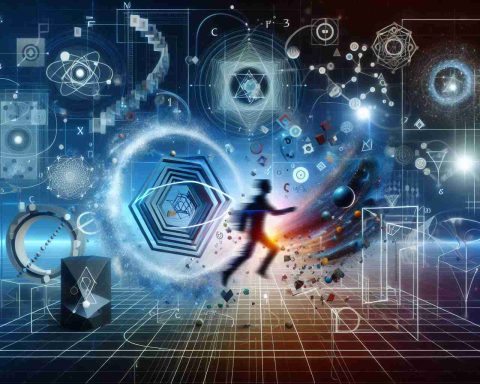- Data centers are exploring Small Modular Reactors (SMRs) as a sustainable energy solution due to rising energy demands.
- Tech giants like Amazon, Google, Microsoft, and Meta are pursuing nuclear energy partnerships, indicating a collective shift towards more sustainable practices.
- No operational SMRs currently exist in the U.S., with companies like Oklo planning deployment by 2027, but widespread adoption faces regulatory challenges and high costs.
- Nuclear power offers stable, low-carbon energy, beneficial for the tech sector, while public safety concerns and waste management remain key obstacles.
- Nuclear plants may soon become an integral part of powering tech operations, contributing to a broader green economy movement.
In the face of surging energy demands, 2024 marks a pivotal moment as data centers eye nuclear power—and particularly Small Modular Reactors (SMRs)—as a groundbreaking energy solution. Driven by the urgent need for sustainable options, tech giants like Amazon, Google, and Microsoft are at the forefront, exploring nuclear energy to secure consistently reliable power.
Tech Titans Lead the Charge
Major players in technology are not just interested but actively pursuing nuclear energy partnerships. Even Meta has joined the fray, signaling a collective move towards cleaner energy. Yet, these partnerships remain in the nascent stages, reflecting both enthusiasm and caution in modernization.
Challenges on the Horizon
Despite the excitement, no operational SMRs exist in the U.S. yet, casting shadows on the timing of this energy revolution. Companies like Oklo aim to roll out their first SMR by 2027, but widespread use could take a decade due to intricate regulatory hurdles.
The Upsides and Obstacles
Pros: Nuclear power offers a stable, low-carbon energy source, crucial for the eco-conscious tech sector. SMRs promise reliability and efficiency, making them ideal for data centers that require consistent uptime.
Cons: Lengthy approval processes and high initial costs remain significant barriers. Public concerns about safety and waste management continue to pose challenges.
A Future Powered by Nuclear Energy
Experts predict nuclear plants could soon be integral to powering tech operations, driven by increasing demands for sustainable solutions. As data centers embrace nuclear options, this shift represents more than an energy change—it hints at a broader movement towards a greener economy.
The journey towards nuclear-powered data centers is just beginning. As industry leaders navigate complexities, nuclear energy stands as a promising beacon, potentially reshaping the landscape of energy sourcing in the years to come.
Nuclear-Powered Data Centers: The Future of Sustainable Energy?
Introduction
In light of increasing energy demands, data centers are investigating nuclear power, particularly Small Modular Reactors (SMRs), as a potential game-changer. While tech giants like Amazon, Google, and Microsoft explore these options to ensure reliable energy sources, several questions and considerations arise.
Key Insights into Nuclear Energy for Data Centers
# 1. What are the Pros and Cons of Utilizing SMRs in Data Centers?
Pros:
– SMRs provide a stable and low-carbon energy source, aligning with the tech sector’s eco-friendly goals.
– Their reliability and efficiency make them perfect for data centers that necessitate uninterrupted power.
Cons:
– Lengthy regulatory approvals and high initial costs act as major deterrents.
– Persistent public concerns over safety and waste management require careful handling and robust solutions.
# 2. How Soon Can We Expect Operational SMRs for Data Centers in the U.S.?
As of now, there are no operational SMRs in the United States. Companies like Oklo have plans to launch their first SMR by 2027, with widespread application anticipated over the next decade. The major hurdle remains the complex regulatory landscape that must be navigated carefully to ensure timely development and deployment.
# 3. How Could Nuclear Energy Transform the Tech Industry?
The shift towards nuclear energy is more than just a change in power source—it signifies a substantial move towards a greener, more sustainable future. As data centers start adopting nuclear options, the tech industry could witness:
– A drastic reduction in carbon emissions, significantly aiding environmental conservation efforts.
– Enhanced energy security, leading to consistent operations without hitches due to power outages or shortages.
Market and Innovation Trends
The drive towards integrating SMRs in data centers reflects a broader industry trend towards sustainability and resilience. Innovations in nuclear technology continue to evolve, promising safer and more cost-effective solutions in the future. The tech industry is likely to spearhead this transformation, setting an example for other sectors.
Conclusion
While the journey to nuclear-powered data centers is at its infancy, the potential benefits offer a compelling enough reason to pursue this path. As tech leaders confront and navigate associated challenges, nuclear energy becomes more than just an option—it stands as a promising catalyst for innovation within energy solutions.
Suggested Resources
For more details, you can explore the following websites:
– Amazon
– Google
– Microsoft
These platforms provide insights into their respective sustainability initiatives and technological advancements in energy utilization.
The source of the article is from the blog lisboatv.pt














